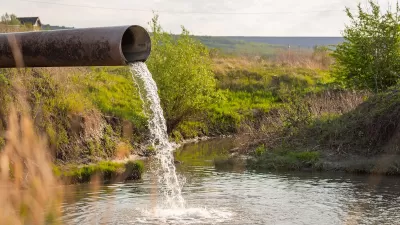The pressures on water supply are growing at the same time that water quality is becoming more expensive and more difficult to maintain. A recent article examines the challenges in the farm state of Nebraska.
“The costs of managing drinking-water quality are substantial and rising. The federal Environmental Protection Agency estimated last year that the nation may need to spend upwards of $380 billion in capital costs alone to upgrade its drinking water systems,” reports Daniel Snow and Peter Calow.
The article sites the example of Nebraska (a welcome break from the daunting and persistent drought narratives of California and Texas) in exemplifying the challenges to managing water supplies: “For Nebraska, there are three main pressures on water quality that are likely to resonate across the United States, especially in farm states: the ever-increasing intensification of agriculture in response to increasing demands for food; the increasing frequency of extreme weather events as climate changes; and an aging infrastructure of drinking-water and sewage-treatment systems.”
Snow and Calow also explain the danger, and who is likely to suffer the consequences, of shoe-horning simplistic solutions to the problem: “If treatment alone is viewed as the only solution, then costs are unfairly passed on to communities not responsible for the contamination. These costs can be particularly serious for small rural communities, where the technology required to remove both uranium and nitrate could cost as much as $5 million and require substantially increased operational costs.”
FULL STORY: The Rising Pressures on the Water We Drink

Alabama: Trump Terminates Settlements for Black Communities Harmed By Raw Sewage
Trump deemed the landmark civil rights agreement “illegal DEI and environmental justice policy.”

Planetizen Federal Action Tracker
A weekly monitor of how Trump’s orders and actions are impacting planners and planning in America.

How Atlanta Built 7,000 Housing Units in 3 Years
The city’s comprehensive, neighborhood-focused housing strategy focuses on identifying properties and land that can be repurposed for housing and encouraging development in underserved neighborhoods.

In Both Crashes and Crime, Public Transportation is Far Safer than Driving
Contrary to popular assumptions, public transportation has far lower crash and crime rates than automobile travel. For safer communities, improve and encourage transit travel.

Report: Zoning Reforms Should Complement Nashville’s Ambitious Transit Plan
Without reform, restrictive zoning codes will limit the impact of the city’s planned transit expansion and could exclude some of the residents who depend on transit the most.

Judge Orders Release of Frozen IRA, IIJA Funding
The decision is a victory for environmental groups who charged that freezing funds for critical infrastructure and disaster response programs caused “real and irreparable harm” to communities.
Urban Design for Planners 1: Software Tools
This six-course series explores essential urban design concepts using open source software and equips planners with the tools they need to participate fully in the urban design process.
Planning for Universal Design
Learn the tools for implementing Universal Design in planning regulations.
Caltrans
Smith Gee Studio
Institute for Housing and Urban Development Studies (IHS)
City of Grandview
Harvard GSD Executive Education
Toledo-Lucas County Plan Commissions
Salt Lake City
NYU Wagner Graduate School of Public Service





























